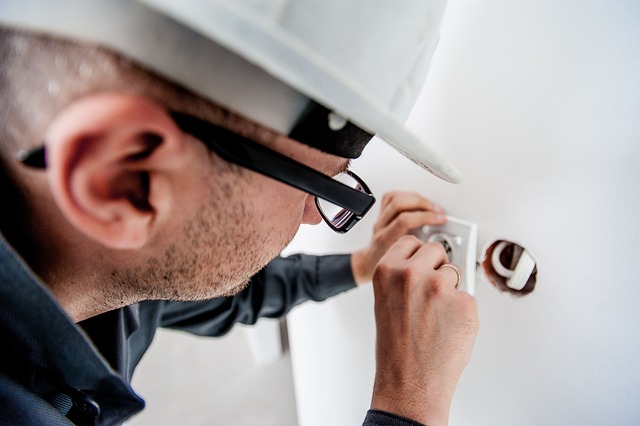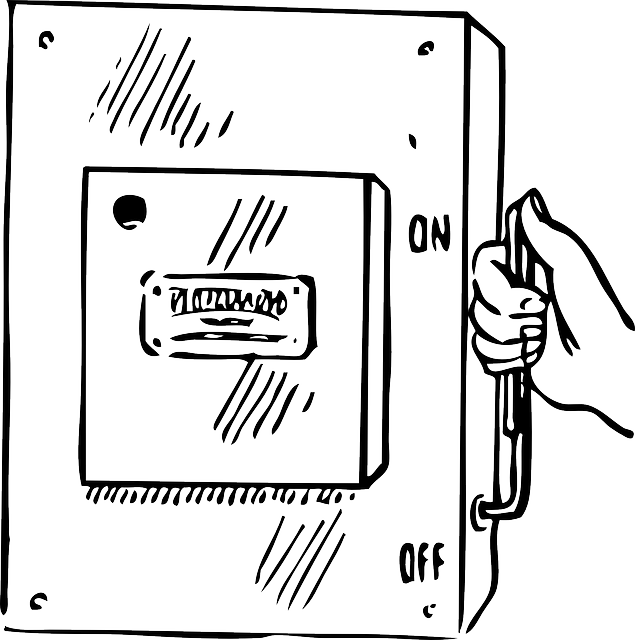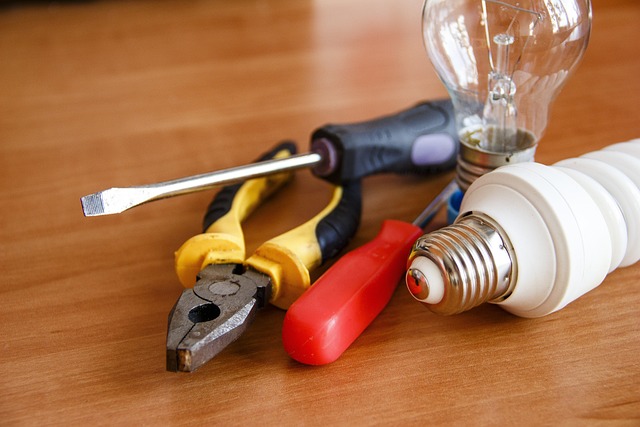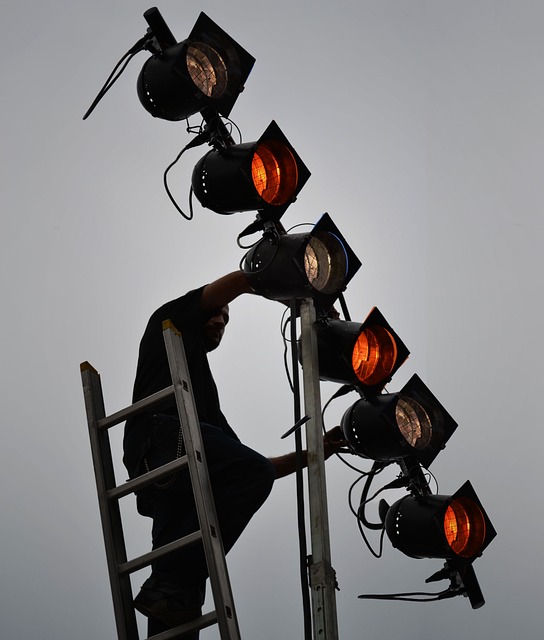When dealing with issues in your home's electrical system, whether it's switches, receptacles, or outlets malfunctioning, it's crucial to consult a skilled electrician for an evaluation. They will determine whether repair or replacement is necessary based on the condition of your system, considering factors like wear and tear, corrosion, or signs of damage that could compromise safety and functionality. For minor problems like loose connections or tripped breakers, a simple repair might suffice. However, persistent issues such as crackling noises or unusual smells from receptacles, or switches that cause lights to dim unpredictably, typically indicate the need for a full replacement. In cases of an outdated or compromised electrical system, upgrading to meet modern safety and energy efficiency standards may be the best solution. Regular maintenance and prompt repairs by a licensed electrician can prevent small issues from escalating into larger, costlier problems and ensure your home's electrical system remains safe and efficient.
For those considering enhancements, an electrician's expertise is invaluable. They can update your electrical system to align with safety standards, optimize for energy conservation with the installation of surge protection switches or LED-compatible dimmers, and integrate smart home technologies for increased convenience and sustainability. Their knowledge ensures compliance with local electrical codes, preventing fire hazards and overloading of your system. By working with an electrician, you can ensure that your home's electrical infrastructure is not only safe and functional but also ready to adapt to future technological advancements and lifestyle changes, guaranteeing optimal performance for years to come.
When electrical issues arise, deciding between repairing or replacing switches, receptacles, and outlets can be a safe and cost-effective challenge. This article navigates the nuances of maintaining your home’s electrical system, providing clear guidance and expert insights from professional electricians. From assessing the state of your system to ensuring safety and efficiency through necessary upgrades, learn how to effectively troubleshoot and maintain these critical components. Whether you’re a homeowner tackling a DIY project or considering hiring an electrician for peace of mind, this comprehensive guide will illuminate the best practices for keeping your electrical infrastructure in top condition.
- Assessing the State of Your Electrical System: When to Repair or Replace Switches, Receptacles, and Outlets
- Step-by-Step Guide to Troubleshooting and Maintaining Switches, Receptacles, and Outlets with Expert Tips from Professional Electricians
- Ensuring Safety and Efficiency: The Role of Electricians in Upgrading Your Home's Electrical Infrastructure
Assessing the State of Your Electrical System: When to Repair or Replace Switches, Receptacles, and Outlets

When homeowners or building managers face issues with their electrical system, a critical decision arises: whether to repair or replace switches, receptacles, and outlets. This determination should be made after a thorough assessment of the system’s state. An experienced electrician can provide valuable insights into the condition of your electrical components. They inspect for signs of wear, corrosion, or damage that could compromise safety and efficiency. If the issue is minor, such as a loose connection or a tripped circuit breaker, a simple repair might suffice. However, if the receptacles are frequently malfunctioning, showing visible signs of aging like crackling sounds when in use, or if there’s an unexplained burning smell, it’s often more prudent to replace these components entirely. Similarly, switches that fail to respond or dim lights intermittently may indicate a deeper problem within the circuitry that could be addressed by updating the switch with a new one. In cases where the electrical system is outdated or has been damaged, an electrician might recommend a complete overhaul of the affected outlets or switches to ensure they comply with current safety standards and energy efficiency practices. Regular maintenance and timely repairs by professional electricians can prevent small issues from escalating into costly replacements and can safeguard your home against potential electrical hazards.
Step-by-Step Guide to Troubleshooting and Maintaining Switches, Receptacles, and Outlets with Expert Tips from Professional Electricians

When encountering issues with switches, receptacles, and outlets, a systematic approach to troubleshooting is crucial. Begin by checking for obvious signs of wear or damage. If the switch or outlet appears normal, move on to testing its functionality. Utilizing a multimeter, confirm that there is power at the device. Should it be non-responsive, consider replacing it rather than attempting a repair. Professional electricians recommend this as a safety precaution due to potential risks of electrical shocks or fires from faulty components.
For switches, if the issue is intermittent lighting, the problem may lie within the switch itself. In such cases, disconnect power first, and then proceed to inspect the wiring connections and internal components for any signs of looseness or burns. Receptacles that are not providing power or are providing power inconsistently may require a reset of their circuitry. This can often be achieved by turning off the power at your service panel, pressing the test and reset buttons on the receptacle’s faceplate in sequence, and then restoring power. If these steps do not resolve the issue, it is advisable to replace the receptacle. Always remember to consult with a licensed electrician if you are unsure or if the problem persists after initial troubleshooting efforts. Their expertise can be invaluable in identifying subtle issues that might escape an untrained eye, ensuring your electrical system operates safely and efficiently.
Ensuring Safety and Efficiency: The Role of Electricians in Upgrading Your Home's Electrical Infrastructure

When considering upgrades to your home’s electrical infrastructure, the expertise of a skilled electrician is paramount. These professionals are adept at assessing the condition of switches, receptacles, and outlets to determine whether repairs or replacements are necessary for ensuring both safety and efficiency. An electrician’s role extends beyond mere installation; they provide critical insights into the optimal placement of new outlets to accommodate modern devices and appliances, which can greatly enhance your home’s functionality. They also understand the importance of adhering to local electrical codes and standards, ensuring that all work is up to par with safety regulations. This commitment to compliance not only protects your home from potential fire hazards but also ensures that your electrical system supports your daily needs without overtaxing it. By entrusting your electrical upgrades to a licensed electrician, you are investing in a safer and more efficient home environment, one that is prepared for the future demands of technology and lifestyle changes.
In addition to their technical skills, electricians bring a level of expertise that extends to energy conservation and the integration of smart home technologies. They can advise on the most energy-efficient options for switches and receptacles, such as those with built-in surge protection or LED-friendly dimmers. Furthermore, their knowledge in incorporating smart devices into your electrical system allows for a seamless transition into a smarter home experience. This not only provides convenience but also contributes to a more sustainable living environment by optimizing energy usage. By choosing to work with an electrician, you are making a decision that prioritizes both the immediate and long-term well-being of your electrical system, ensuring it operates at peak performance and safety for years to come.
When addressing issues with switches, receptacles, and outlets, discerning homeowners and professionals alike recognize the importance of informed decisions for repairs or replacements. This article has provided a comprehensive guide on assessing your electrical system’s condition, offering practical steps for maintenance, and highlighting the critical role electricians play in ensuring both safety and efficiency within your home’s electrical infrastructure. By following expert advice from seasoned professionals, readers can confidently manage their electrical needs, guaranteeing a reliable power supply that serves their daily activities effectively. For any concerns or complex issues, it is always advisable to consult with a licensed electrician who can provide personalized solutions tailored to your specific situation.
